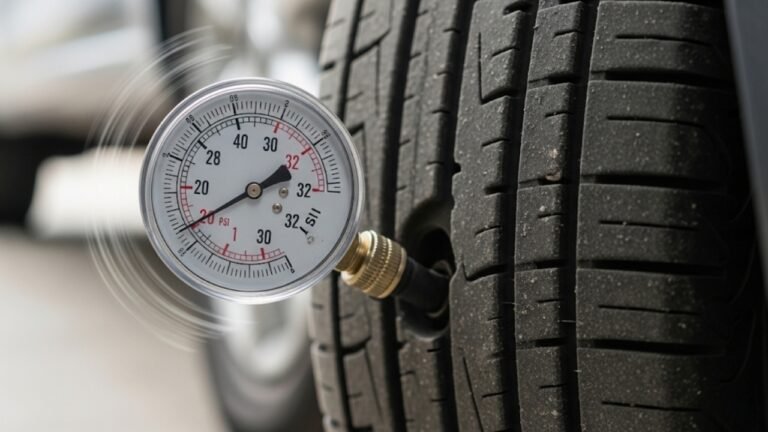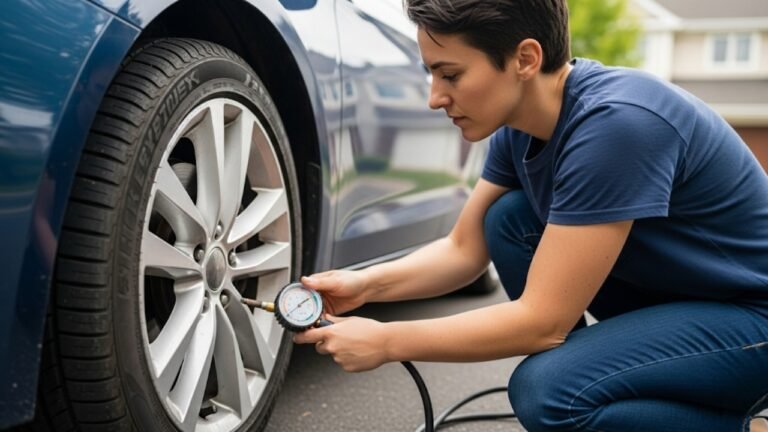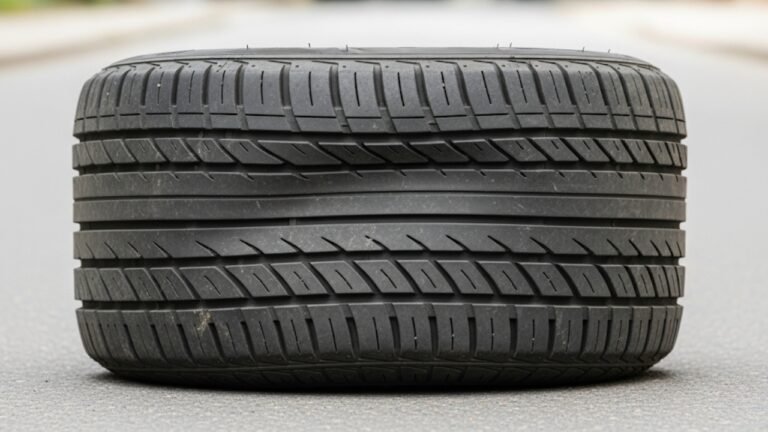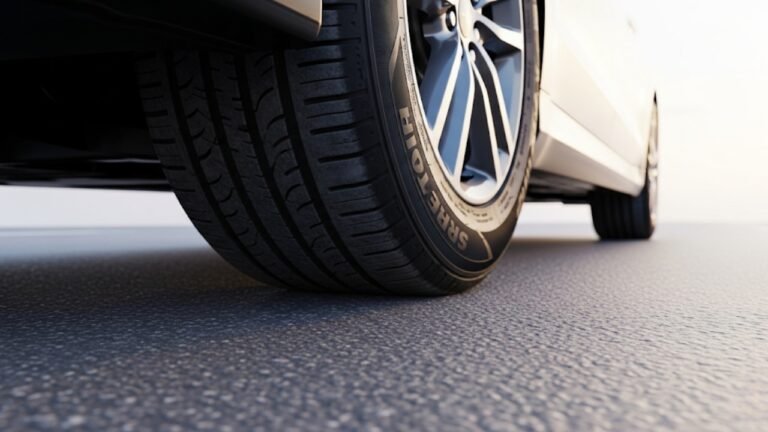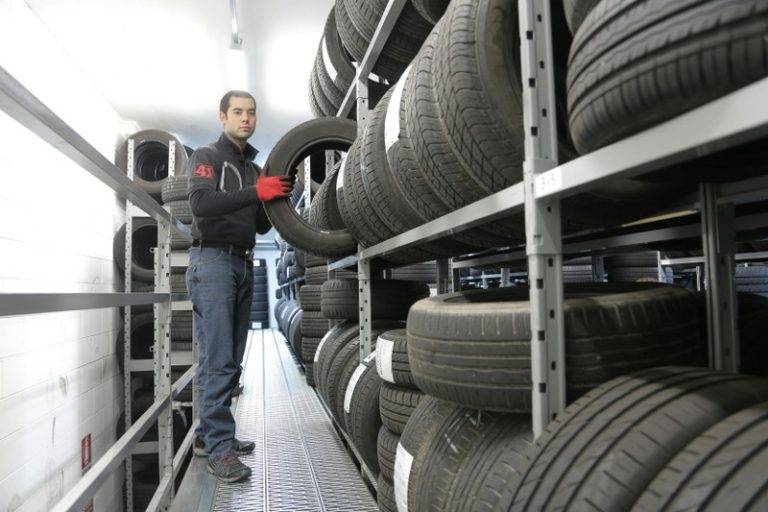How to Correct Tire Pressure: A Friendly Guide
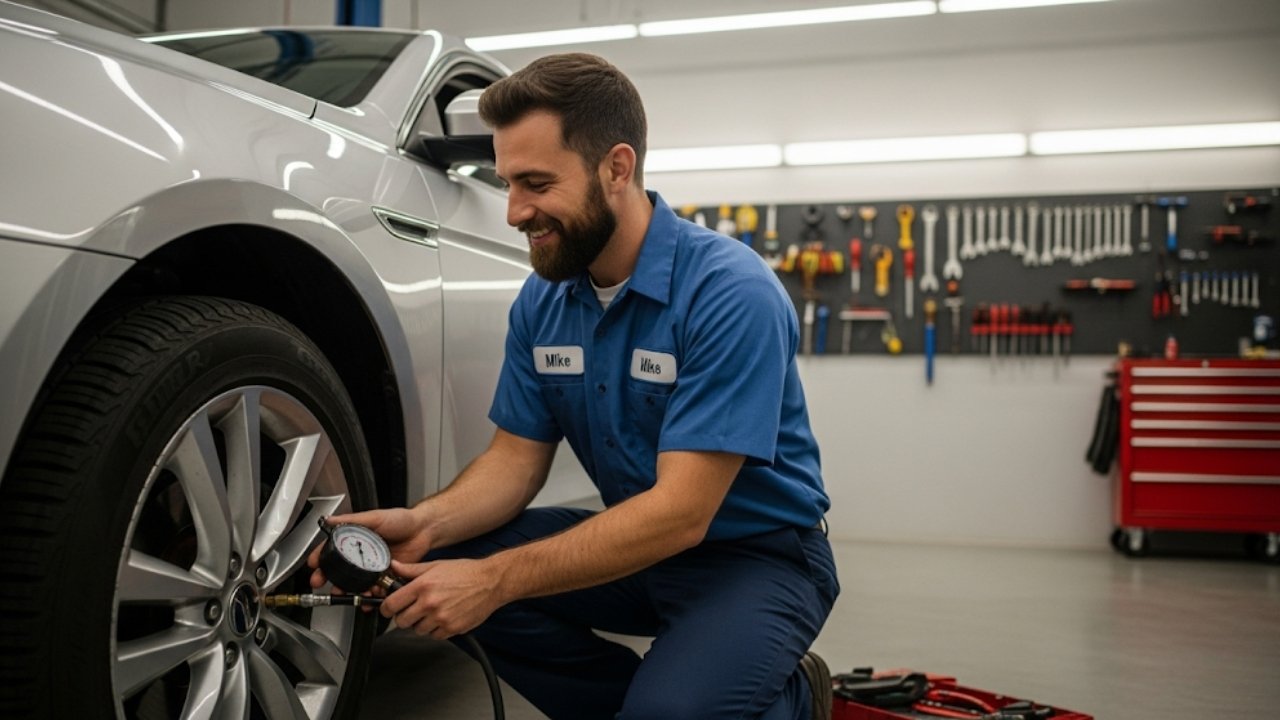
Have you ever had one of those mornings where something just feels off about your car? It’s like it’s dragging its feet—kind of like a sleepy Monday. That was me last winter, late for work and coffee-less, only to realize my tires looked like they’d seen better days.
The culprit? Low tire pressure.
It’s one of those things we often ignore—until we can’t. But learning how to correct tire pressure is one of the easiest, fastest, and most empowering things you can do for your car’s health—and your wallet.
In this article, I’ll walk you through:
-
Why proper tire pressure matters
-
How to check it easily (even in your pajamas)
-
How to correct tire pressure step by step
-
Common mistakes most people make (and how to avoid them)
-
And some FAQs at the end to clear up any last doubts
Grab a cup of tea, friend. Let’s give those tires the love they deserve.
Why Tire Pressure Isn’t Just About the Tires
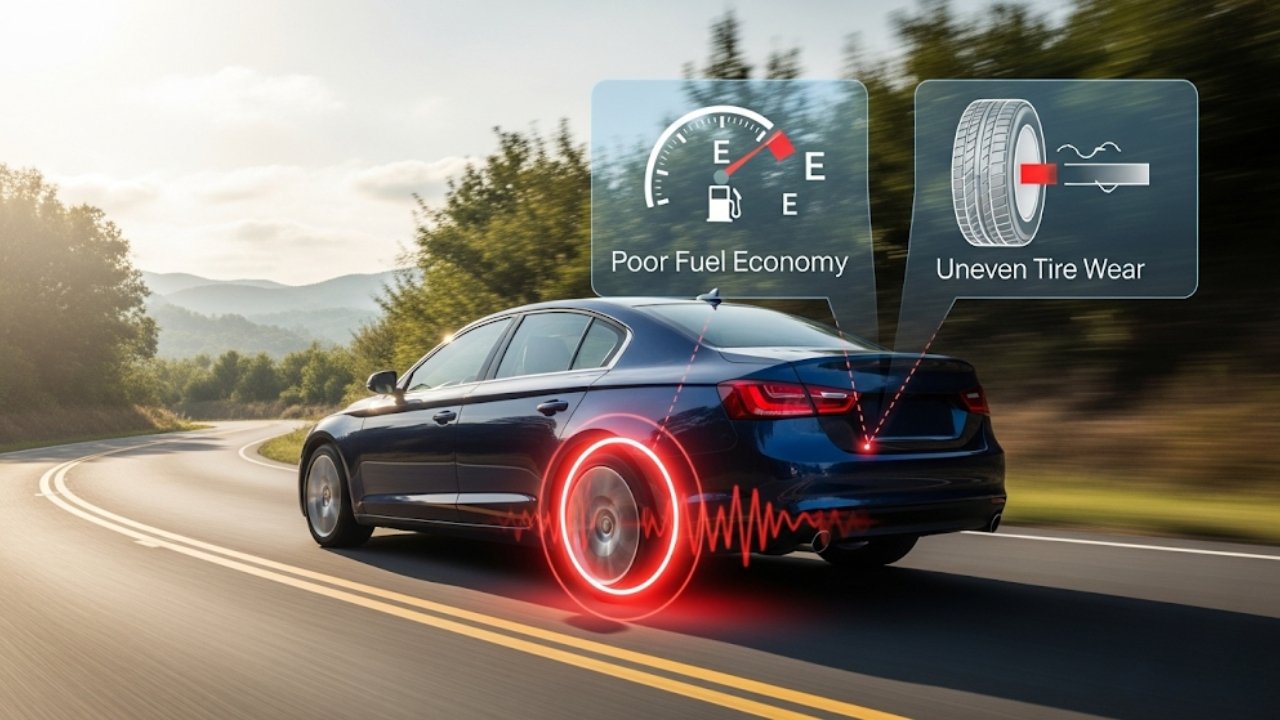
From fuel efficiency to braking distance, tire wear, and even your steering, it’s all connected. Think of tires like the shoes your car wears. Ever tried running in shoes two sizes too big or with loose laces? That’s what driving with incorrect pressure feels like—for your car.
Here’s what happens when your tire pressure isn’t right:
| Tire Pressure Issue | What It Causes |
|---|---|
| Too Low | Poor fuel economy, slow response |
| Too High | Reduced traction, harsh ride |
| Uneven Pressure | Uneven tire wear, alignment issues |
Real Talk:
I once drove 2 months with uneven tire pressure. I thought I had a suspension issue because the car kept veering right. Turned out, the front left tire had 12 PSI. The others? 32. Oops.
That one mistake shaved 5,000 miles off the tire’s life. Lesson learned.
The Magic Number: What Is the Right Tire Pressure?
You can’t correct tire pressure if you don’t know the number you’re aiming for, right? This is like baking cookies without knowing the oven temperature. A little guesswork and suddenly you’ve got charcoal.
So, what’s the right PSI?
PSI stands for “pounds per square inch.” That’s the unit used to measure tire pressure. Most cars fall in the 30–35 PSI range.
But don’t just guess. Here’s where to look:
-
Driver’s side door jamb: There’s usually a sticker
-
Owner’s manual: Yes, that dusty book in your glovebox
-
Inside the fuel door (less common)
⚠️ Do not rely on the tire sidewall number—that’s the maximum pressure the tire can handle, not what your car needs.
Bonus Tip:
If your car’s been sitting in the sun for hours, the tire pressure may read higher due to heat. Always check it when the tires are cold—like early morning or after the car’s been off for a while.
Tools You’ll Need: Quick, Simple, Cheap
Before we jump into how to correct tire pressure, let’s get you set up with the right tools.
Here’s what you’ll need (no toolbox degree required):
-
Tire pressure gauge (Digital or analog—$10–$20)
-
Air compressor (Gas station or home version)
-
Your target PSI number
-
Optional: A pen and notepad if you’re checking all four tires and want to jot them down
I personally use a $12 digital gauge from Amazon. It even has a flashlight on the end, perfect for night checks. And when I’m feeling fancy, I use my portable air compressor—got it on a Black Friday deal.
Types of Gauges:
| Gauge Type | Pros | Cons |
|---|---|---|
| Digital | Easy to read, accurate | Needs battery |
| Stick (pencil) | Cheap, pocket-sized | Less precise, hard to read |
| Dial (analog) | Old-school, solid build | Bulky, can break easily |
Choose one that feels right. The best tool is the one you’ll actually use.
How to Correct Tire Pressure Like a Pro (Even if You’re a Beginner)
Now for the heart of it. Let’s walk through the full process of how to correct tire pressure—step by simple step.
Step 1: Park and Let the Tires Cool
Your readings will be more accurate when the tires are cold. If you’ve been driving, wait at least 30 minutes.
Step 2: Locate the Valve Stem
Find the little rubber or metal stem sticking out of each wheel. That’s your tire’s mouth. Unscrew the cap and keep it safe—those things love to disappear.
Step 3: Use Your Gauge
Press the gauge onto the valve stem until it seals. You’ll hear a tiny hiss—totally normal. Your gauge will give a reading.
Write it down for each tire.
Step 4: Compare Readings to Recommended PSI
Now take a peek at your sticker or manual. How do your numbers compare?
-
Too low? You’ll need to add air.
-
Too high? Let some out—just press the valve slightly with a key or the back of the gauge.
Step 5: Add or Release Air
At most gas stations, you’ll find an air pump (sometimes free, sometimes coin-operated). If you’re using a portable one, even better.
-
Press the air hose onto the valve
-
Add air in short bursts
-
Re-check after each burst
Don’t overdo it. Patience pays off here.
Step 6: Replace the Valve Cap
This tiny cap keeps dirt and water out. Don’t leave it behind.
How Often Should You Check Tire Pressure?
Let me guess—you’re thinking: “I did it once, so I’m good for the year, right?”
Not quite.
Tires lose 1–2 PSI every month just from natural leakage. And if the weather shifts? Pressure can drop like your mood during winter mornings.
Golden Rule:
Check your tire pressure at least once a month
And before any long road trip
I set a reminder on my phone every 1st Sunday of the month. Easy and doable.
Why Seasonal Changes Matter More Than You Think
This one surprised me at first. I live in a place with real seasons. When winter hits, so does my tire light. Every. Single. Time.
Here’s why:
-
For every 10°F drop in temperature, tire pressure drops about 1 PSI
-
Cold air is less dense, so it compresses inside your tire
If you’ve ever seen your TPMS (tire pressure monitoring system) light come on in the fall, that’s why.
Winter Tip: Inflate your tires when it’s cold out—not after you’ve warmed them up on the highway.
Common Mistakes When Correcting Tire Pressure (And How to Avoid Them)
I’ve made a few of these myself, especially early on. Think of this like learning to ride a bike—you wobble at first, but once you get it, it’s smooth sailing.
Here are the most common missteps people make while trying to correct tire pressure, and how to avoid each one:
1. Ignoring the “Cold Tire” Rule
This is number one for a reason. Always check tire pressure when tires are cold. Heat causes air to expand, giving you a false high reading. You might release air thinking it’s overinflated when it’s actually perfect.
Avoid it: Check in the morning, before driving.
2. Using the Sidewall Number
The number printed on the tire sidewall (like 44 PSI) is the maximum pressure the tire can handle—not what your car needs.
Avoid it: Always go by the sticker on the door jamb or the owner’s manual.
3. Not Rechecking After Filling
People often fill the tire and walk away without checking the pressure again. That’s like adding salt to soup without tasting it.
Avoid it: Use the gauge again right after filling. Adjust if needed.
4. Forgetting the Spare Tire
Out of sight, out of mind, right? But if you get a flat and your spare is also flat—you’re out of luck.
Avoid it: Check your spare tire’s pressure every 3–4 months. It often needs more PSI than your regular tires.
5. Letting the Valve Cap Go Missing
It’s tiny, but it protects your valve from dirt, salt, and moisture. Losing one isn’t the end of the world, but over time, gunk can cause leaks.
Avoid it: Keep extras in your glovebox—cheap insurance!
What Happens If You Don’t Correct Tire Pressure?
Let’s be real. Skipping this habit might seem harmless. But the risks are real—and they sneak up quietly.
Here’s what you could be facing:
-
Reduced Fuel Efficiency: Your car works harder with underinflated tires.
-
Poor Handling: Turning, braking, even parking feels sluggish.
-
Blowouts: Yup—an over- or under-inflated tire is more likely to burst, especially on highways.
-
Uneven Wear: You’ll be replacing tires more often. That’s money down the drain.
I once paid nearly $180 for a single tire replacement. Why? I had ignored the low-pressure light for weeks. The outer edge wore down to the steel wire. It felt like a rookie mistake—and it was.
The Emotional Side of Tire Maintenance
This may sound strange, but there’s a quiet peace in checking your tire pressure. Seriously.
In a world where so many things are unpredictable, this is something you control.
There’s something deeply satisfying about hearing the click of the gauge, seeing the PSI just right, and knowing you’re doing a small thing that has a big ripple effect—for your safety, your savings, and your peace of mind.
It’s a moment of grounding, like tying your shoes before a hike or making your bed in the morning.
Small ritual. Big meaning.
Tire Pressure by Weather: A Seasonal Guide
Because air expands and contracts with temperature, it helps to adjust your tire pressure habits with the seasons.
Here’s a quick seasonal breakdown:
| Season | Tire Pressure Tip |
|---|---|
| Winter | Expect a drop in pressure. Check weekly. |
| Spring | Pressure fluctuates. Re-check during warm-ups. |
| Summer | Air expands. Avoid overinflation in heat. |
| Autumn | Monitor as temps drop—pre-winter drop alert! |
Smart Tools That Make the Job Easier
Technology can help you keep tire pressure in check automatically or with less effort.
✨ Useful gadgets:
-
TPMS Sensors: Already built-in for most modern cars
-
Bluetooth Tire Monitors: Track pressure via smartphone
-
Portable Air Pumps with Auto Shut-off: Stops when correct PSI is reached
These aren’t must-haves, but if you love gadgets or travel a lot, they’re fantastic companions.
Quick Checklist for Correcting Tire Pressure
Here’s a friendly reminder list you can screenshot or print:
✅ Monthly Tire Pressure Routine
-
Check tires when cold
-
Use your own gauge
-
Refer to door sticker/manual for PSI
-
Adjust air as needed
-
Recheck after filling or releasing
-
Don’t forget the spare tire
-
Replace valve caps
Stick this in your glovebox, and you’re golden.
FAQs: How to Correct Tire Pressure
1. Can I check tire pressure after driving?
Technically, yes—but the reading may be higher due to heat. For accuracy, wait 30 minutes after driving or check before your first trip of the day.
2. How often should I correct tire pressure?
Once a month is ideal. Also check before long drives or major temperature changes.
3. Can I drive with low tire pressure?
Short-term? Maybe. But it’s risky. It affects handling, increases tire wear, and raises the chance of a blowout. Correct it ASAP.
4. What happens if I overinflate my tires?
Too much air makes the tire stiff, reducing traction and comfort. It can also wear the center tread faster.
5. What’s the best tire pressure gauge?
A digital gauge is easiest for most people. They’re accurate, affordable, and simple to use—even at night.
6. Should all four tires have the same pressure?
Not always. Some cars require different PSI for front and rear. Always check your sticker or manual.
7. Does tire pressure affect fuel economy?
Absolutely! Just 5 PSI under can lower mileage by 5–10%. Keeping it right saves fuel—and money.
8. Is nitrogen better than air in tires?
Nitrogen loses pressure more slowly, but for daily drivers, regular air works just fine—just stay consistent with checks.
Final Thoughts: It’s Not Just Air—It’s Awareness
Learning how to correct tire pressure might seem small, but it’s one of the most practical ways to connect with your car. It’s like listening to your body—when something feels off, you check in.
By doing this simple routine, you’re not just protecting your car—you’re protecting your passengers, your wallet, and your peace of mind.
And that, my friend, is something worth rolling with.

